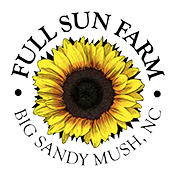Remember to bring your box. This week will mark the new box return policy. If you forget your box you will not be permitted to take the actual box with you. You can transfer its contents to a bag(s). We will have some on hand if needed. Thanks.
Well, all morning I was worried that there wouldn’t be enough to fill up the box this week. Every crop that I looked to to add a little something special wasn’t ready, there wasn’t enough, or it was all gone from previous harvests. Somehow, in the end, we had a hard time getting everything to fit in the boxes!
Much of the farm is now put to bed for the winter. We used some new combinations of cover crops this year, incorporating a couple of new strategies. There are areas of the farm that have a combination of Winter Rye, Hairy Vetch and Red Clover. These areas will be used much later on in the 2011 season. The Rye has to fully mature before it will die, growing to 5-6′ in height. It takes 5-6 weeks for all that matter to be incorporated into the soil after it has been mowed and disced under. In another field we substituted Winter Wheat instead of the Rye. The wheat only grows to about 2′ in height and therefore that field will be available sooner that the fields with the Rye, simply because there will be less cover crop residues to incorporate. In other fields we are using a Oats & Hairy Vetch combination. Oats grow very rapidly in the Fall and are usually killed low winter temperatures, leaving the vetch to grow by itself in the Spring. This combination allows for even less time to pass for the field to be ready for tilling in the Spring, since the Vetch is the only living plant growing which is very easily incorporated. These fields enjoy the protect from Fall rains by the fast growing Oats and are further shielded with the dead oat plants covering the soil as well as the nitrogen fixing attributes of the Vetch. And in one other field we just sowed Oats which will grow quickly in the Fall and provide protection from the elements throughout the winter, living or dead, and will allow us to very quickly work up that portion of the field to sow our earliest crops, like spinach, radishes, and peas in the Spring.
Next season’s strawberries will be planted this week, along with some over-wintering flowers. The garlic & onions will go in last in the middle of October. Vanessa still would like to sow another bed of spinach and there is another round of lettuce to plant, as well as a bed of greens that we’ll try to keep growing through the end of December and beyond.
Nick’s Corner
As a first time farm intern the most interesting thing to witness is the transitional seasons. Summer in many ways seems to get lost in the busyness that accompanies it, not to mention the heat. I remember when I first moved up here to Full Sun Farm the most blatant thing that I remember was the cover crops that had made it through the winter and were on the brink of blooming, turning fields to crimson or purple. This past week the cover cropping was begun. The colors and beauty that I experienced in the spring was done near this date a year ago. So now the cover crop is planted, ready to establish itself before the true cold comes it’s way.
This past Saturday was quite disheartening. After a phenomenal Saturday market, two weeks ago, this Saturday was, lets say far from phenomenal. We made it to market right near dawn and began to set-up. It was one of the most beautiful tables I’ve ever seen full of luscious greens, lettuce, beets and turnips. Around 10-am only two hours after the start of market the bottom drops out of the sky and everything and everyone at market proceeded to get drenched. For much of the time it’s raining the market is dead. It was at this point I realized that all of the food we’d work so hard to harvest, would not be sold. Thankfully the food didn’t go to waste and was donated to a soup kitchen. It was then I too realized how lucky we’d been this season to have this be the first time that it had rained all season on a Saturday. Like so many things in the world of agriculture, that’s the way the ball bounces.
